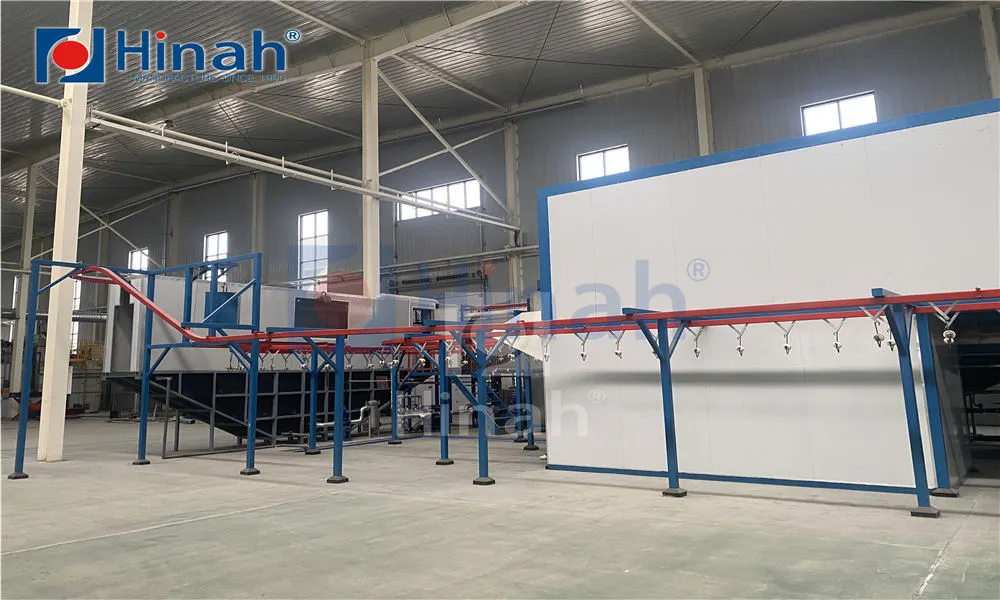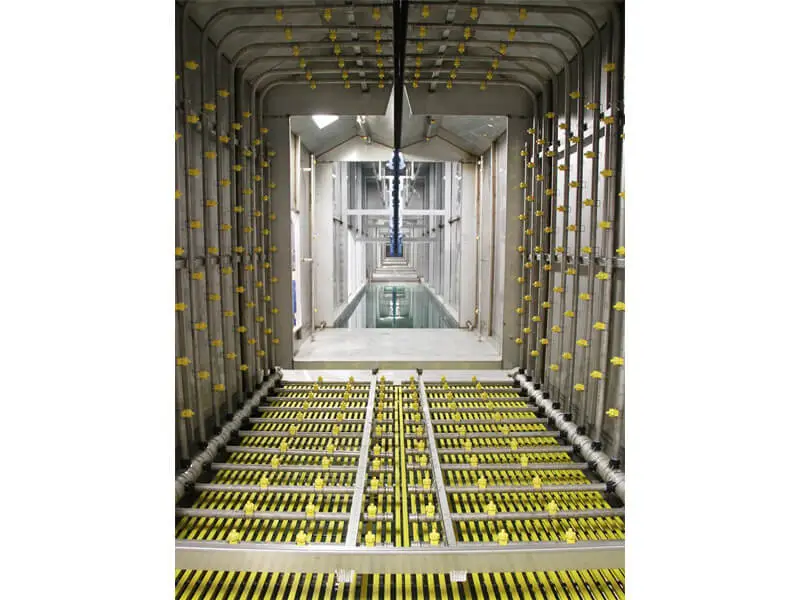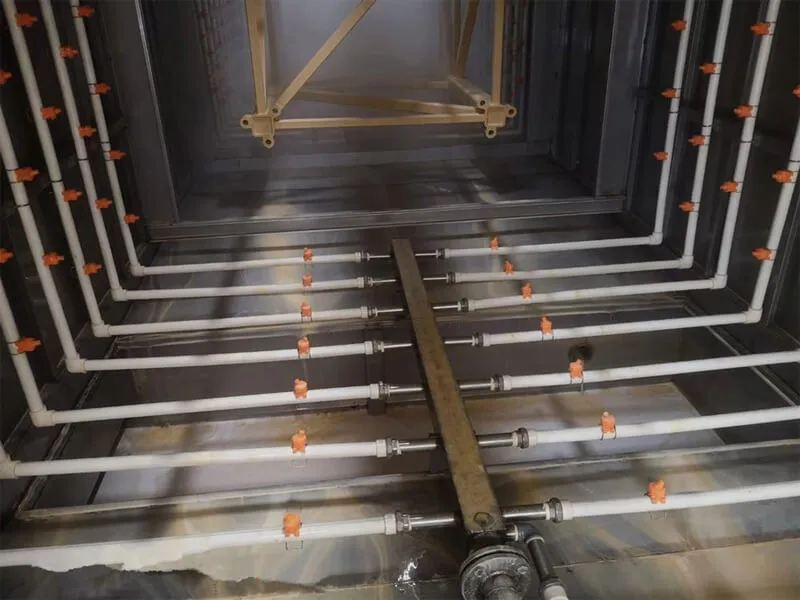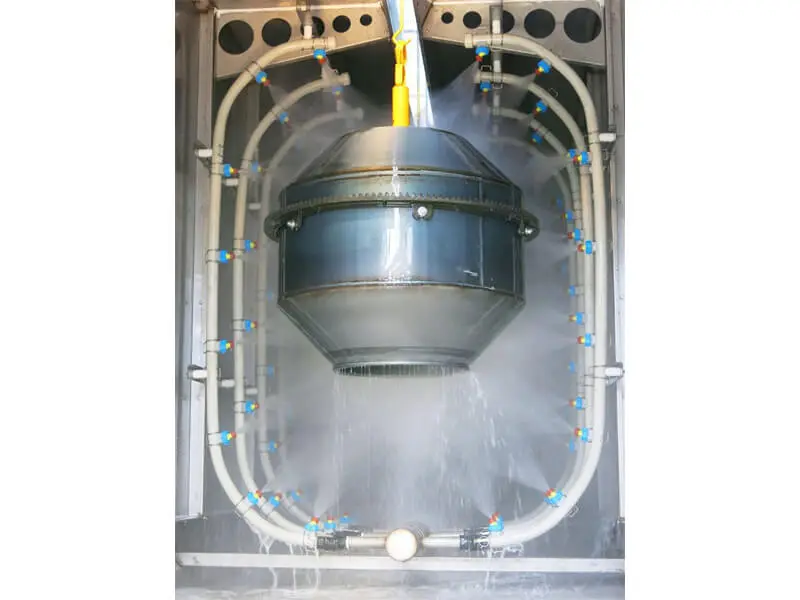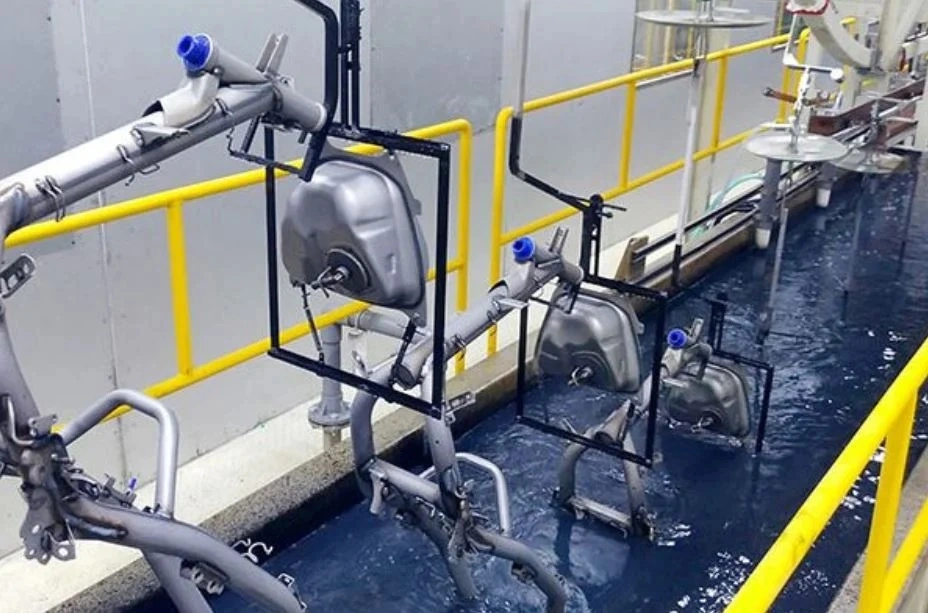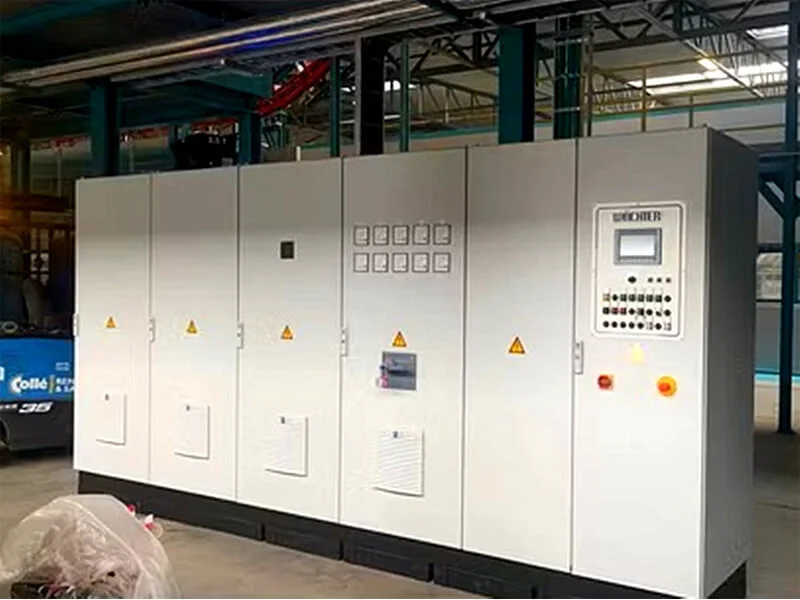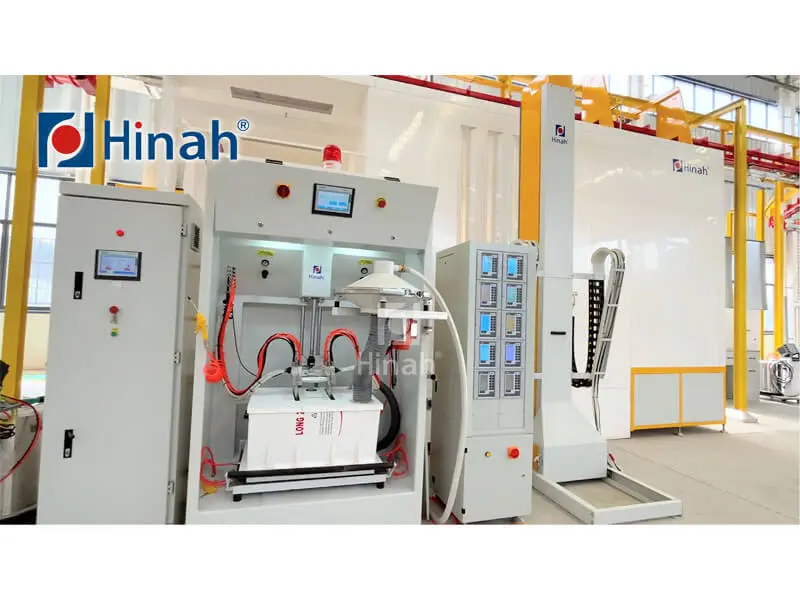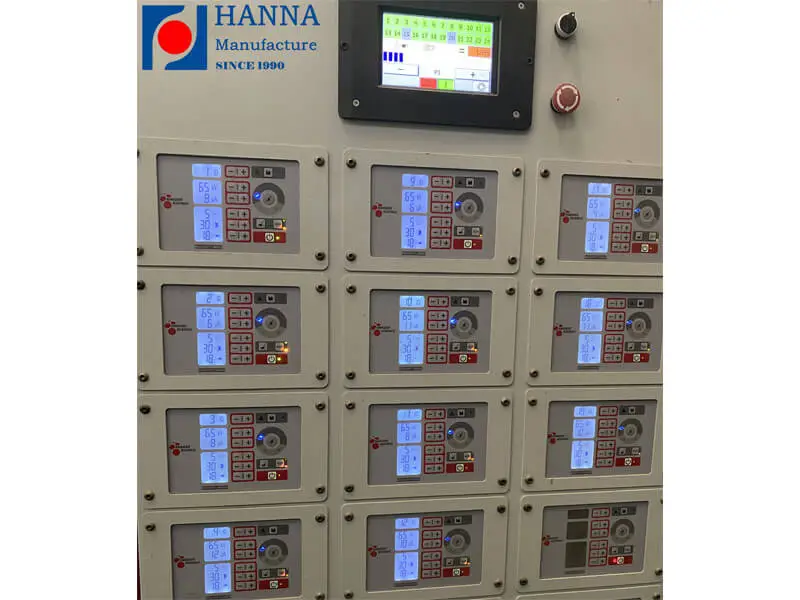In today's competitive industrial landscape, manufacturers are constantly seeking ways to enhance efficiency, reduce costs, and improve product quality. One of the most transformative advancements in this realm is the adoption of an automated paint line. This system streamlines the coating process, ensuring consistent finishes while minimizing human error. At the heart of many modern operations lies the automated powder coating line, which leverages cutting-edge technology to apply durable, eco-friendly coatings to various substrates. This article delves into the key components of such systems, including the automatic powder coating booth, powder coating robot, and the role of a turnkey painting system integrator. We will also explore the benefits of a custom automated powder coating system and address common challenges faced in implementation. By understanding these elements, businesses can make informed decisions to optimize their coating processes.
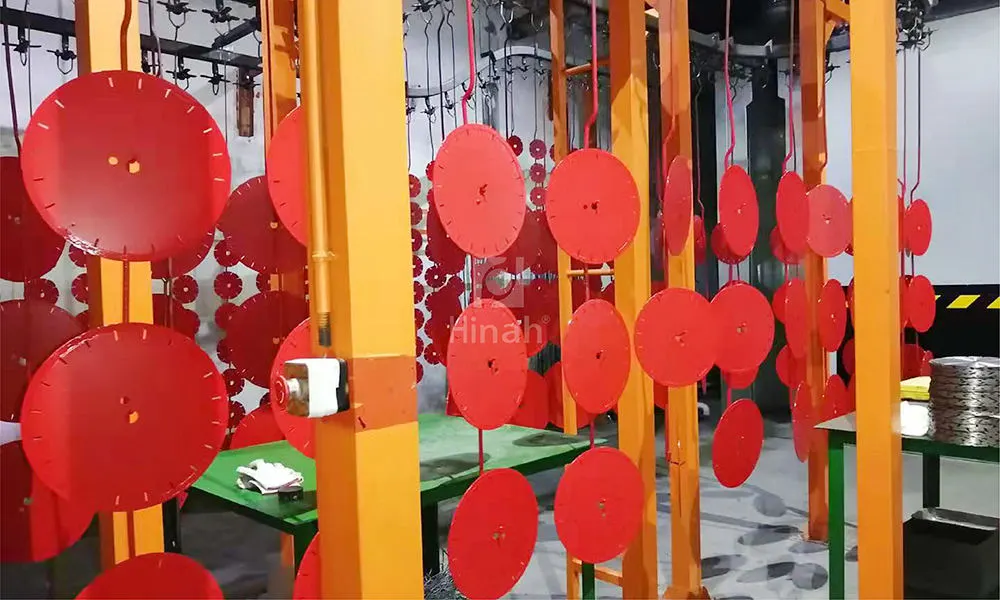
An automated powder coating line represents a significant leap forward from traditional manual painting methods. This system is designed to handle everything from pretreatment and application to curing, all with minimal human intervention. The core advantage of an automated paint line is its ability to maintain uniform quality across high-volume production runs. For instance, in industries like automotive, aerospace, and furniture manufacturing, an automated powder coating line ensures that every component receives a consistent layer of powder, which is then cured to form a hard, protective finish. This process not only enhances durability but also reduces waste, as oversprayed powder can often be recycled.
The integration of an automated powder coating line typically begins with a conveyor system that transports parts through various stages. These include cleaning and phosphating to prepare surfaces, followed by the application phase in an automatic powder coating booth. By automating these steps, companies can achieve higher throughput and better resource utilization. Moreover, an automated paint line is highly adaptable; it can be customized to handle different part sizes and shapes, making it ideal for diverse manufacturing environments. As we proceed, we'll break down the individual components that make such systems so effective.
The Role of an Automatic Powder Coating Booth
The automatic powder coating booth is a critical component within any automated paint line. This enclosed space is where the actual powder application occurs, and its design directly impacts efficiency and safety. In an automatic powder coating booth, advanced ventilation systems control airflow to contain powder particles, preventing contamination and ensuring a clean working environment. This is essential for maintaining the quality of the coating and protecting operator health. Additionally, modern booths are equipped with recovery systems that capture excess powder, allowing it to be reused—a feature that underscores the sustainability of an automated powder coating line.
One of the key benefits of an automatic powder coating booth is its compatibility with robotic technology. When paired with a powder coating robot, the booth becomes a hub of precision and speed. The robot can be programmed to follow complex paths, ensuring even coverage on intricate parts. This synergy between the booth and robot minimizes manual touch-ups and reduces the risk of defects like orange peel or thin spots. For businesses considering an upgrade, investing in a high-quality automatic powder coating booth is a strategic move that pays dividends in consistency and cost savings. However, proper maintenance is crucial; issues such as clogged filters or inadequate airflow can disrupt the entire automated paint line, leading to downtime and rework.
How Powder Coating Robots Enhance the Process
The introduction of a powder coating robot has revolutionized the automated paint line by bringing unparalleled precision and repeatability. These robots are typically multi-axis arms equipped with electrostatic spray guns, capable of maneuvering around parts with extreme accuracy. In an automated powder coating line, a powder coating robot can be programmed to apply coatings uniformly, even on complex geometries that would challenge manual operators. This not only improves product quality but also boosts productivity, as robots can operate continuously without fatigue.
A powder coating robot is often integrated into a larger custom automated powder coating system to address specific production needs. For example, in the automotive sector, robots are used to coat everything from small brackets to entire vehicle frames. The programming flexibility allows for quick changeovers between different part types, making the system highly versatile. Moreover, data from the powder coating robot can be fed into monitoring software, providing real-time insights into application rates and potential issues. This data-driven approach helps in predictive maintenance, reducing unplanned stoppages in the automated paint line. Despite these advantages, companies must invest in proper training for personnel to program and maintain these robots effectively, as technical glitches can lead to significant disruptions.
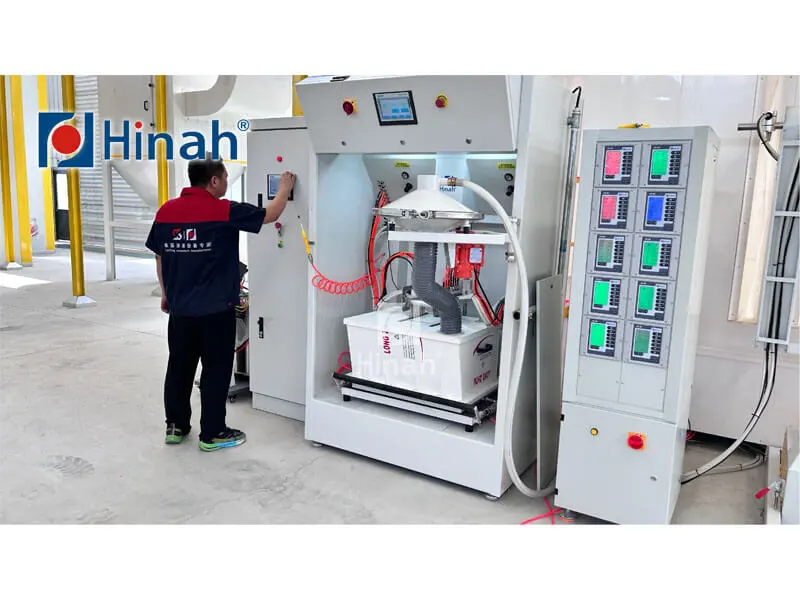
The Importance of a Turnkey Painting System Integrator
Implementing an automated paint line is a complex endeavor that requires expertise in various domains, from mechanical engineering to software control. This is where a turnkey painting system integrator becomes invaluable. A turnkey painting system integrator specializes in designing, installing, and commissioning complete coating solutions, ensuring that all components—such as the automated powder coating line, automatic powder coating booth, and powder coating robot—work seamlessly together. By engaging a turnkey painting system integrator, businesses can avoid the pitfalls of piecemeal approaches, such as compatibility issues or suboptimal performance.
A reliable turnkey painting system integrator will conduct a thorough assessment of the client's needs, including production volume, part variety, and quality standards. They then design a custom automated powder coating system that aligns with these requirements. This holistic approach covers everything from layout planning to training and after-sales support. For instance, a turnkey painting system integrator might recommend specific upgrades to an existing automated paint line to incorporate energy-efficient curing ovens or advanced robotics. Their role extends beyond installation; they provide ongoing maintenance and troubleshooting, which is crucial for minimizing downtime. Collaborating with a seasoned turnkey painting system integrator ensures that the investment in an automated powder coating line delivers maximum return, while also future-proofing the operation against evolving industry demands.
Advantages of a Custom Automated Powder Coating System
While off-the-shelf solutions have their place, a custom automated powder coating system offers tailored benefits that can significantly enhance operational efficiency. This type of system is designed from the ground up to meet specific production challenges, incorporating elements like an automated powder coating line, automatic powder coating booth, and powder coating robot in a cohesive layout. The primary advantage of a custom automated powder coating system is its ability to optimize workflow, reducing cycle times and material waste. For example, in a high-mix, low-volume environment, customization might include flexible programming for the powder coating robot to handle diverse part sizes without manual adjustments.
Another key benefit of a custom automated powder coating system is scalability. As business grows, the system can be expanded or modified without a complete overhaul. This is particularly important for industries with fluctuating demands, such as consumer electronics or industrial machinery. A well-designed custom automated powder coating system also integrates easily with other manufacturing processes, thanks to the expertise of a turnkey painting system integrator. By focusing on specific needs, companies can achieve higher quality standards and faster throughput, making the automated paint line a cornerstone of their production strategy. However, the initial investment in customization can be higher, so it's essential to conduct a cost-benefit analysis to ensure long-term viability.
Common Problems in Automated Painting Systems and How to Solve Them
Despite the many advantages, implementing and maintaining an automated paint line can present several challenges. Understanding these common issues and their solutions is crucial for maximizing uptime and performance. Below, we discuss frequent problems encountered in automated powder coating line operations and practical ways to address them.
Inconsistent Coating Thickness: One of the most common issues in an automated paint line is uneven application, which can lead to defects like runs or poor adhesion. This often stems from improper calibration of the powder coating robot or fluctuations in the powder delivery system. To resolve this, regular maintenance of the automatic powder coating booth and robot programming checks are essential. Using a turnkey painting system integrator for periodic audits can help identify and correct these issues early.
Powder Contamination and Rejection: In an automated powder coating line, contamination from dirt, oil, or moisture can cause coating failures. This is often due to inadequate pretreatment or flaws in the automatic powder coating booth filtration. Implementing strict cleaning protocols and upgrading to high-efficiency particulate air (HEPA) filters can mitigate this. Additionally, a custom automated powder coating system can include enhanced pretreatment stages to ensure surface purity.
Robot Malfunctions and Downtime: The powder coating robot is a complex piece of equipment that may experience mechanical or software failures. Common causes include wear and tear, electrical issues, or programming errors. To minimize downtime, schedule preventive maintenance and keep spare parts on hand. Training operators to perform basic troubleshooting is also beneficial. Engaging a turnkey painting system integrator for support ensures access to expert repairs and updates.
System Integration Challenges: When components like the automated powder coating line, automatic powder coating booth, and powder coating robot are not properly integrated, it can lead to communication breakdowns and inefficiencies. This is where the role of a turnkey painting system integrator is critical. They ensure that all elements work in harmony, using standardized protocols and testing during installation. For existing systems, retrofitting with compatible upgrades may be necessary.
Energy Inefficiency and High Operating Costs: An automated paint line can be energy-intensive, particularly during curing phases. Issues like heat loss in ovens or inefficient recovery in the automatic powder coating booth can drive up costs. Opting for a custom automated powder coating system with energy-saving features, such as infrared curing or regenerative thermal oxidizers, can reduce consumption. Regular energy audits help identify areas for improvement.
Safety and Compliance Risks: Automated systems must adhere to safety standards to prevent hazards like fires or exposure to hazardous materials. Problems may arise from inadequate ventilation in the automatic powder coating booth or improper handling of powders. Conducting regular risk assessments and training staff on safety protocols is vital. A turnkey painting system integrator can assist in ensuring compliance with local regulations.
By proactively addressing these challenges, businesses can maintain a robust automated paint line that delivers consistent, high-quality results. Investing in a well-designed custom automated powder coating system and partnering with a reliable turnkey painting system integrator are key steps toward long-term success.
The evolution of industrial coating processes has made the automated paint line an indispensable asset for modern manufacturers. By incorporating an automated powder coating line with components like the automatic powder coating booth and powder coating robot, companies can achieve unprecedented levels of efficiency and quality. The expertise of a turnkey painting system integrator ensures that these systems are seamlessly integrated and optimized for specific needs, while a custom automated powder coating system offers the flexibility to adapt to changing demands. Although challenges such as inconsistent coating or robot malfunctions may arise, they can be effectively managed through proper maintenance and professional support. Embracing these technologies not only enhances productivity but also positions businesses for sustainable growth in a competitive market. As industries continue to innovate, the automated paint line will remain a cornerstone of advanced manufacturing, driving improvements across the board.


